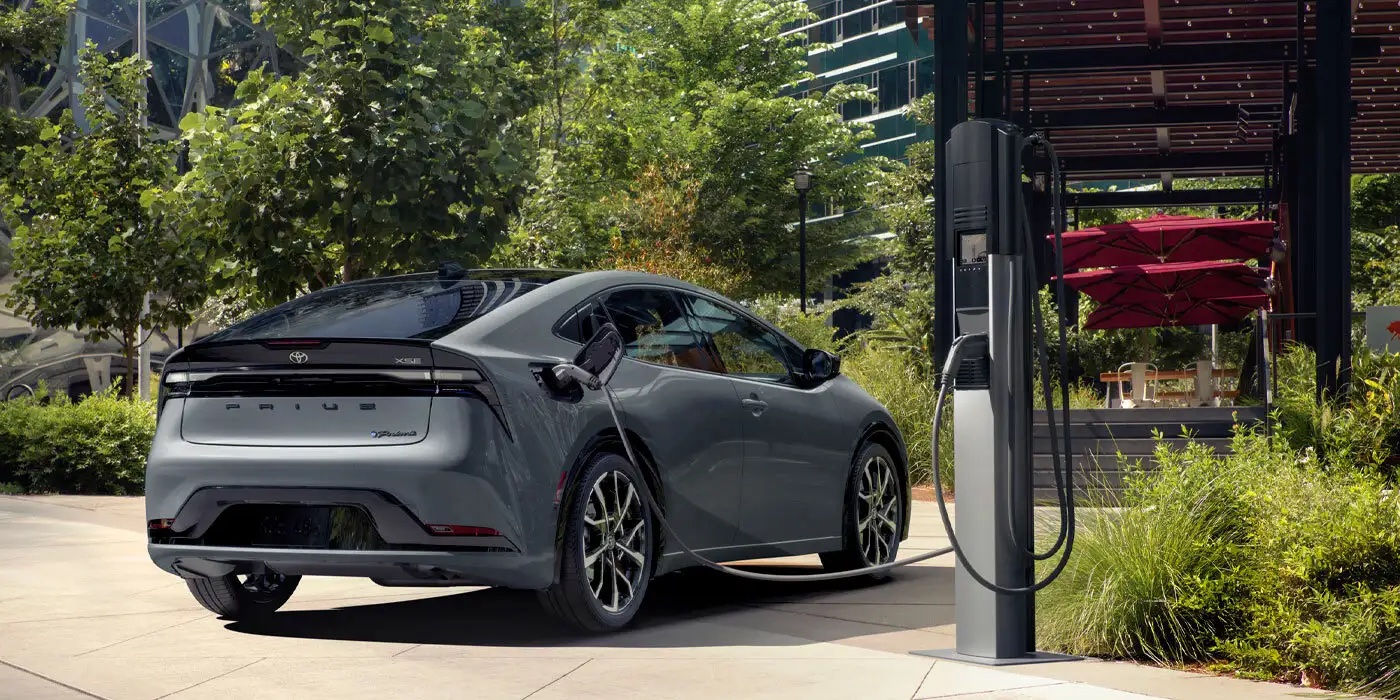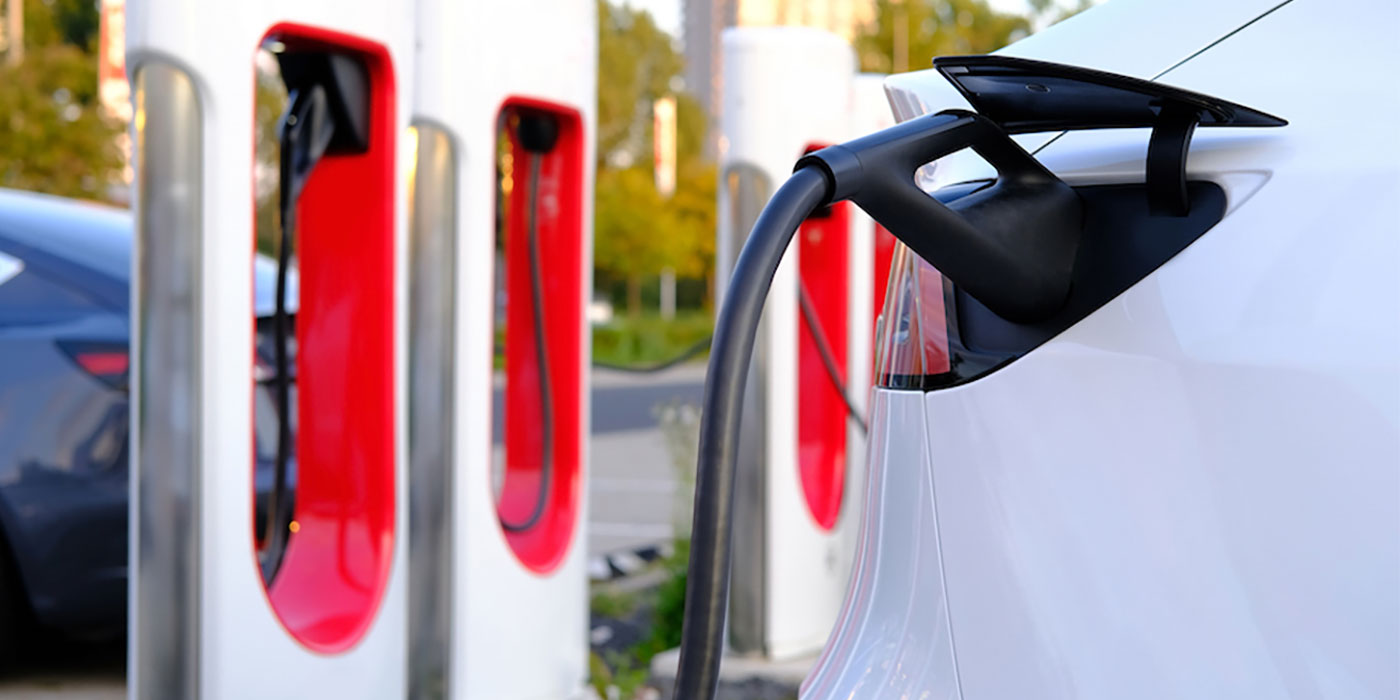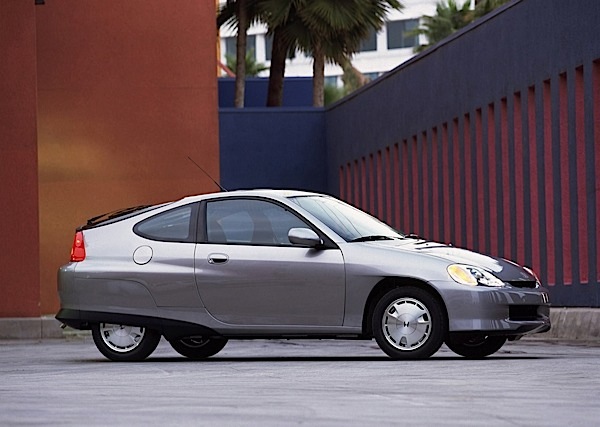
The Honda Insight might be a rare bird when compared to the Civic or Accord, but they are like all vehicles in that they wear out brake pads, shoes and rotors. Servicing the brakes on the Insight does not require dealing with the high voltage hybrid system.
The Insight has a conventional brake system. The master cylinder, booster and ABS system are regular production pieces and do not require special tools. It does not have the complexity of the Prius’ pedal stroke simulator.
Servicing the Insight brake system is just like working on any other brake system. But, the devil is in the details when working on this highly efficient vehicle.
The Owner
The Insight owner is not your typical Prius owner. The average Insight owner is well educated and a bit of a loaner due to the choice of a two-seat vehicle. They love their Insight and realize that Honda will probably never make another one like it, so they want to make it last forever.
Another thing the first-generation Insight has going for it is a loyal following on the internet at InsightCentral.net. This is one of the best model-specific internet forums where owners and even technicians can get good advice.
Front Brakes

The front brakes are conventional single-piston calipers that are similar to the Civic. Front pad life can last more than 60,000 miles due to the weight of the vehicle. The Insight is not prone to pulsation complaints.
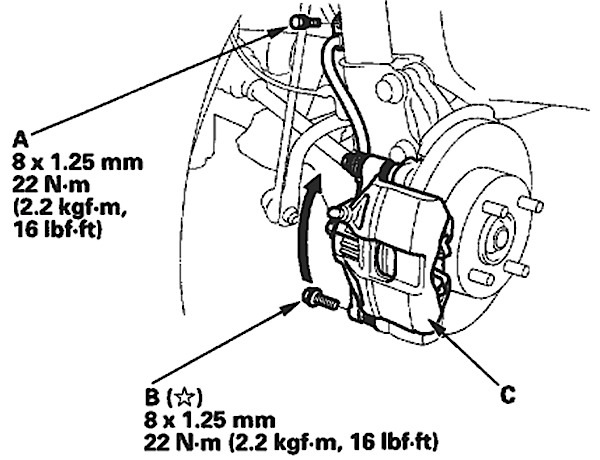
The Insight uses aluminum calipers. Take care when installing banjo bolts and bleeders to prevent cross threading. The caliper pin and bracket bolts use Dacro coated fasteners to prevent corrosion. Make sure you replace with similar fasteners.
Always replace the hardware and service the caliper slide pins as part of any brake job. The caliper guide pins use a reverse-pin type guide on the upper bolts that have two dust boots.
ROTORS
Standard: 16.9 – 17.1 mm (0.665 – 0.673 inch)
Service Limit: 15.0 mm (0.59 inch)
Rear Brakes
The Insight uses self-adjusting rear drums. The linings have a service limit of 1 mm. The Insight has a two-piece rear drum design with aluminum fins.
The internal brake surface is made of conventional cast iron. This design has significantly reduced weight over a cast iron drum. The use of aluminum fins on the outside helps to assist with cooling.
Machining this drum can be difficult, and all attempts should be made to remove as little material as possible. Also, inspect for cracks in the friction surface of the drum.
DRUMS
Standard: 179.9 – 180.0 mm (7.083 – 7.087 inch)
Service Limit: 181.0 mm (126 inch)
Parking Brake
After servicing the rear brake shoes, loosen the parking brake adjusting nut, start the engine, and press the brake pedal several times to set the self-adjusting brake before adjusting the parking brake. The brake should be fully engage after 4 to 6 clicks.
1. Block the front wheels and raise the rear of the vehicle.
2. Remove the center console.

3. Pull the parking brake lever up one click.
4. Tighten the adjusting nut until the parking brakes drag slightly when the rear wheels are turned.
5. Release the lever fully, and check that the parking brakes do not drag when the rear wheels are turned. Readjust if necessary.
6. Make sure the parking brakes are fully applied when the lever is pulled up fully.
7. Reinstall the console.
Regenerative Braking
The Insight is a simpler hybrid and does not decouple the engine, generator and electric motor with a planetary gear. The system uses both the hydraulic brakes and generator to slow the vehicle.
During deceleration, the gasoline engine is switched into a fuel cut mode, and the IMA system is operated in generation mode. In this mode, the IMA motor/generator is driven by the wheels.
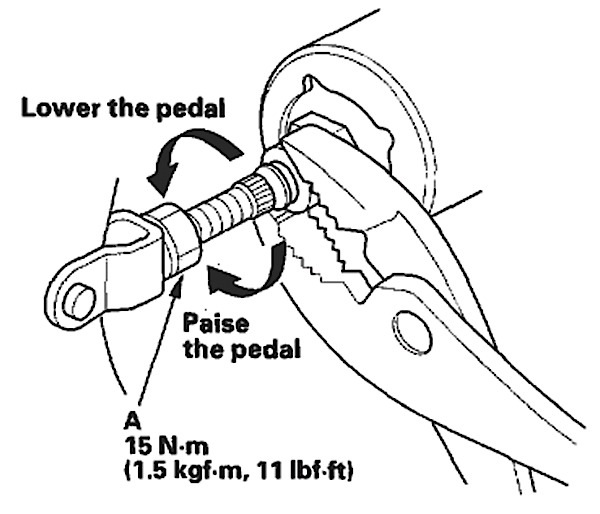
The IMA system uses inputs from the brake pedal position switch and on later models, an accelerometer to determine how much regenerative braking should be used. A properly adjusted brake pedal position switch can make a big difference in the operation of the regenerative braking. If a customer complains that the regenerative brakes are grabby, readjusting the brake pedal position switch might solve this problem.
Pedal Height
1. Disconnect the brake pedal position switch connector, loosen the brake pedal position switch locknut (A), and back off the switch (B) until it is no longer touching the brake pedal.
2.Disconnect the idle stop switch connector, and loosen the idle stop switch (CVT).
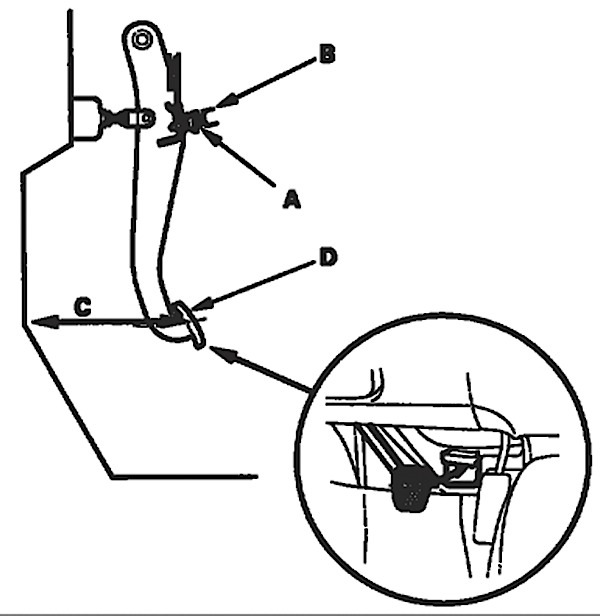
3. Lift up the carpet. At the insulator cutout, measure the pedal height (C) from the middle of the right side center of the pedal pad (D).
• Standard pedal height (with carpet removed): 184 mm (7 1/4 inch).
4. Loosen the pushrod locknut (A), and screw the pushrod in or out with a pair of pliers until the standard pedal height from the floor is reached. After adjustment, tighten the locknut firmly. Do not adjust the pedal height with the pushrod pressed.
5. Screw in the brake pedal position switch (A) until its plunger is fully pressed (threaded end (B) is touching the pad (C) on the pedal arm). Then back off the switch 1/4 turn to make 0.3 mm (0.01 inch) of clearance between the threaded end and the pad. Tighten the locknut firmly. Connect the brake pedal position switch connector. Make sure the brake lights go off when the pedal is released.
6. After adjusting the brake pedal position switch, adjust the idle stop switch (D) with the same procedure used in step 5. When finished, start the engine, and make sure the engine stops when the brake pedal is pressed (CVT).
Note these items during adjustment:
• When either the brake pedal position switch or the idle stop switch needs adjusting, both switches must be adjusted together to keep their functions synchronized. Always adjust the brake pedal position switch first, then adjust the idle stop switch; never adjust the switches independently.
• When the brake pedal is released, the brake pedal position switch is normally open and the idle stop switch is normally closed.
7. Check the brake pedal free play.
ABS
The insight uses a conventional ABS system with two special features. First, if the ABS system is activated, it will turn off the IMA drive. This is to make sure the pump has enough power. Second, the system has a hill holding function called the Creep Aid System (CAS).
The CAS prevents the vehicle from rolling forward or backward on a hill during which the driver releases the brake pedal by controlling brake pressure.
When the ABS modulator control unit receives a CAS activation request signal from the PCM, the system assists the driver to get the vehicle started by holding the brake pressure. This control is done not only on hills, but also on level roads. When the driver lifts his foot off the brake pedal to get the vehicle started, the brake switch is turned off, and the brake pressure is held by operating the TCS valve and the CAS valve.
Bleeding
To bleed the system after hydraulic component replacement many bleeding methods can be used. If the HCU is replaced, it requires the use of a scan tool.
Bleeding Sequence:
LF, RF, RR and LR.


















